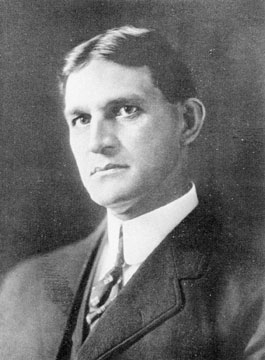The President who developed West Plaza
 Davison McDowell Douglas came to PC in 1911 from the Maryland Avenue Presbyterian Church in Baltimore. He was a graduate of Davidson College and Columbia Seminary, earned an MA degree from the University of South Carolina, and completed additional post-graduate work at Princeton and Johns Hopkins.
Davison McDowell Douglas came to PC in 1911 from the Maryland Avenue Presbyterian Church in Baltimore. He was a graduate of Davidson College and Columbia Seminary, earned an MA degree from the University of South Carolina, and completed additional post-graduate work at Princeton and Johns Hopkins.
During his fifteen-year tenure, the college continued to grow in the number of students, faculty, and buildings on campus. Four new buildings were completed: Spencer Dormitory (1912), Wm. P. Jacobs Science Hall and Library (1915), Smyth Dormitory (1924), and Leroy Springs Gymnasium (1924).
A man of vision, President Douglas engaged Charles W. Leavitt, Jr. of New York City, a landscape engineer of national reputation, to lay out a plan for the West Plaza during his first year as president. The plan would take a cotton field and Professor Martin’s cow barn near Neville Hall and transform it into a green plaza with avenues on either side. Trees were planted giving the campus much of its present beauty.
President Douglas also believed in the value of physical activity as an integrated part of the educational process, and as such, he expanded the intercollegiate athletic program at PC and lifted the ban on intercollegiate football in 1913.
Leaving PC a much stronger college, Dr. Douglas resigned in 1926 to become the president of the University of South Carolina. Davison M. Douglas died in Columbia in 1931.
Source: Information provided by PC Archives
